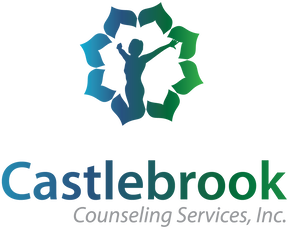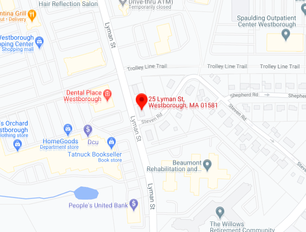Taking My Own Advice: A Day in the Life of a Therapist’s Self-Care RoutineCynthia Williams, LMHC
I want you to close your eyes and paint the picture of what you did the last time self-care was brought up. It could have been anywhere: on the radio on the way to work, in a podcast advertisement, in a book, etc. The place you might expect it most? Therapy. And if you’re anything like me, a licensed mental health counselor, I experience a roller coaster of feelings from cringe, exasperation, shame, guilt, anxiety, and maybe even denial. It’s not an easy topic. It’s also not at all sensationalized (can you hear my eyes roll from there?). I start most of my conversations with people who work with me with: “Okay, hear me out and just keep an open mind….” Self-care is HARD (and anyone who tells you otherwise is someone I need to ask a few questions of, so hook a therapist up if you find this unicorn 🦄). Okay, hear me out and keep an open mind: self-care doesn’t have to be complicated or cumbersome! (See what I did there 😉) so let’s go on this journey to what ultimately became my daily personalized self-care buffet. (And if you want to impress your therapist, try this at home and bring the topic up in session!) I’m Cynthia Williams, a licensed mental health counselor in MA who’s been practicing mental health counseling for eight years, primarily focusing on kids, families, and sustainable change for intense mental health conditions. It is my personal and professional value to be authentic and transparent to the most ethical and moral degree. A study done in Massachusetts showed that what people value most in their healthcare is confident, trustworthy, and respectful providers (Joffe, Manocchia, Weeks, Cleary 2003). Your relationship with your provider will affect how you meet your goals, so we must demystify this barrier between coaching and practicing. This means I’ll be the first to admit how difficult it can be to follow treatment suggestions, but I have confidence in them because I am devoted to practicing what I “preach.” Let’s be honest here, though: I don’t just take my own advice because I want the people I work with to trust me; I do it because it improves my experiences and helps me achieve my goals. As a therapist, it may be shocking that I see my own therapist (let’s call this the first step of taking my own advice), but I doubt it’s shocking to hear that I’m just as tricky as a client as I am a therapist. We’ll call it dedication to testing the strength of my therapeutic resolve. None more so than the time my long-time therapist asked me what I did to practice self-care. To put it mildly, I scoffed, rolled my eyes, and made a short answer of the cookie-cutter things I was doing in my life that sounded like they came from a magazine, like “I get pedicures, don’t book my weekends so that I can sleep in, I treat myself to takeout when I don’t feel inspired to cook, etc..” And just like I do as a clinician, he called me out dismissively, “Oh, so nothing. Well, I can’t say you have much of a reason to feel okay.” I vowed to win World War III with this therapist at that moment. I demanded he tell me what he did for self-care if he felt secure enough in his expertise to judge me on my process. Oh, and didn’t he tell me! He shared his experience of self-care, and he damned the social stereotype. He’s been stuck with me ever since! Having the fog lifted from this polite, one-way space felt so meaningful. His self-disclosure of how he implemented the concept made me feel like I wasn’t alone. An observer wasn’t judging me; I felt like a fellow soldier on the field had given me a hand to pull me out of the trenches. As a provider, I know providers are real people. But sometimes we need reminders because I don’t know about you, but my emotional brain sometimes runs off with the keys to the car. So, while I can’t even begin to remember my therapist’s self-care routine, I can tell you about the system I’ve been working on for over five years. My relationship with self-care is based on the concept of a buffet (shocker, I’m a massive Southern foodie). Instead of breakfast, lunch, dinner, appetizer, entree, snack, and dessert, my self-care buffet reflects eight dimensions of wellness: physical, intellectual, emotional, social, spiritual, vocational, financial, and environmental (Stoewen 2017). I’ll simplify this when overwhelmed to just four categories: physical, social, emotional, and mental. This already makes my brain process what seems like an impossible task of self-care to the simple question of what I can do to care for my body, mind, heart, or relationships. From there, I break down activities that I can do to take care of those aspects of myself. I am a list person, so I have a master list of all the practical activities under each dimension. For example, reading is a sizeable self-care activity for me as it feeds my socialization within my book communities and clubs, validates or expands my emotional experiences, challenges me to think beyond my own experience, distracts me from my current/future stressors, teaches me new concepts and strategies, and allows me to rest my body. Another example would be having a Kindle Unlimited subscription as a form of financial self-care because it reduces my book spending (as does budgeting and reviewing my budget and spending regularly). Understanding the dimension of wellness and having a list of self-care activities doesn’t complete the process of a good self-care routine. Now that you have the foundation of my self-care process, you’re ready to hear how I implement it: rules and rewards. While rest and relaxation is my first favorite R&R, rules and rewards is my second favorite. Here’s the breakdown of my R&R to self-care: rules are designed to help implement self-care techniques in small increments, while rewards are designed to incentivize my follow-through. For example, let’s say I’m getting up from the couch to get a snack from the kitchen. The rules say that I have to take anything belonging in the kitchen from the living room when I’m going to the kitchen, aka when leaving one space to go to another, I must collect all the things that belong in that next space. So I take the two cups and one plate to the kitchen from the living room to get a snack. When I return from the kitchen, the living room will be cleaner than before with minimal effort. This would fall under environmental self-care. I have a few rules, but the environmental one is one of the most effective. The reward for following through with the environmental rule is that I don’t have to clean very often. But when I do, I will reward myself with takeout, an episode of my favorite show, or anything within reason. However, a much better example of one of my reward systems is the better habits bingo. I build a bingo board full of tasks I’m avoiding, self-care techniques I need motivation to follow through with (like Yoga or paying my excise taxes), and a free space (jokes on you if you think I’m not taking FULL advantage of bingo etiquette). Then, for each bingo I get, I use $25 from my budget bingo reward money to spend on anything I want. More often than not, I end up standing in front of my fridge (where the bingo board lives), trying to figure out what I can do to get whatever I found that I wanted while scrolling through the internet. So now that you have the system I live by, let’s take a closer look at what a realistic day of self-care looks like for me: Morning self-care routine Wake up Play wake-up mix on Spotify Put in my Contacts Acknowledge the beauty in my eyes Brush my teeth Apply Eye cream and massage my eyes Moisturizer toner and massage my whole face Moisturizer with SPF 30 Brush my hair Compliment myself Make myself a coffee Mindfully enjoy the first sip Make or grab breakfast/snack Break from work Review my to-do lists for the day Check-in using my emotional tracking app Drink something Eat something Reward myself with a TikTok or two Stretch in or out of my chair Acknowledge my efforts and productivity with work Text/message my best friend or cousin Check my bank account and check off bills paid from the budget app End-of-day routine Listen to a book Take a shower w/ sugar scrub and shower steamer Take my contacts out Massage my body while applying lotion Brush my teeth and acknowledge my progress in dental care Sinus massage using a face stone Face massage, applying eye cream and moisturizer Check-in with my body and emotions using a tracking app The heating pad on my back Foot massage w/ lotion Read before bed If you noticed, I included self-care activities from the following categories: environmental, physical, emotional, social, mental, vocational, and financial. How much time do you think those routines take? My morning routine takes me 30 minutes or less, breaks from work range from 15 to 45 minutes, and my nighttime routine takes between 30 minutes and an hour. Sometimes, I do more; sometimes, I do less. I amp up my self-care to reduce burnout when I’m more stressed or active. When I’m under less stress or have less going on, sometimes I’ll decrease my self-care in some areas and amp it up in others (like lately, I’ve been taking it easy on the mental self-care like learning new concepts and skills or organizing my thoughts, and focusing on physical and environmental self-care like practicing yoga more and completing deep cleaning or home-based projects). My relationship with self-care is continuously growing because I am continuously growing. It hasn’t always been pretty; I would’ve told you self-care was a scam a few years ago! Phew, am I glad I came to my senses😅 and found what worked for me. I couldn’t have done it without my therapist’s example. It can be really hard to take suggestions from someone, especially about self-care. So it’s essential that you feel connected with your provider and yourself about your needs. Like everything else in your growth journey, self-care must be individualized for you and your life. If you don’t feel like the information connects or fits with you or your lifestyle, find someone who can help you brainstorm the system that does fit you! If you’d like to take this a little further, try brainstorming what you currently do or could do for each dimension of wellness and talk it over with your provider! Sources
Comments are closed.
|
Archives
May 2025
Categories |
Mission Statement
Castlebrook Counseling Services, Inc. is a group of private practice clinicians with a shared goal of strengthening our community by providing therapy and clinical support designed for children, adults, and families to successfully meet life’s challenges.
 RSS Feed
RSS Feed

